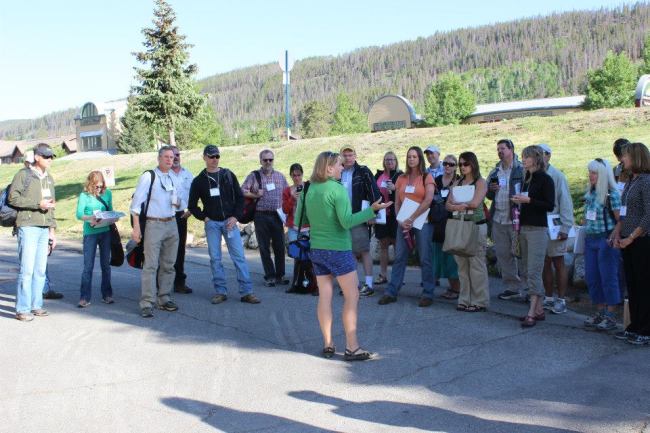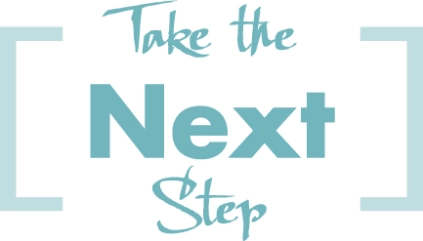Interpretation is not just the delivery of information. It is revelation, a moment when an audience member makes new and meaningful connections. So how can interpreters facilitate these interpretive moments?
If you’ve ever been an interpreter, you know that you never really leave this type of work behind, even if you no longer practice it daily. A lasting remnant from this part of my career was my memorization of the so-called “interpretive equation.” This equation details what is needed to achieve an “interpretive opportunity,” the moment when interpretation takes place.
The equation, written in non-mathematical formula, goes something like this: Knowledge of the resource, and knowledge of the audience, combined with the appropriate techniques for both, are necessary to produce an interpretive opportunity.
In other words, any successful interpreter needs: knowledge of the resource, knowledge of the audience, and appropriate interpretive techniques for a given situation.
Knowledge the Interpreter Brings
The first one is perhaps the most obvious: knowledge of the resource. What are you going to talk about, and what research do you need to conduct to describe it all comprehensibly? If you’re going to talk about the water-energy nexus, what facts and figures do you need to back up your discussion points? What terms and concepts do you need to define? What information do you want to cover? What meanings are inherent in this subject (more on this later!)? We must learn about our subject before we can present it to others.
Knowledge of the audience, however, is an equally important component. To whom are you going to present? Children, families, adults? Are you talking to people who have never heard of the topic, who have some knowledge, who already have a fair amount of expertise?
As you can imagine, you would probably craft a significantly different program based on these answers.
Research Your Audience in Advance
How can you get to know your audience? This varies from setting to setting and from program to program. We often have some clue about our audience type, of course – if you’re presenting at an elementary school, you know you’ll be presenting to young students, not senior citizens.
You might be able to find information before your program. For example, if you’re coordinating with a teacher to speak to her class, you can ask what subjects the students have been studying. But often we don’t know until we’re in front of our audience.
Getting to Know Your Audience
How can we gauge our audiences’ level of knowledge or interest? Ask questions.
Ask them about your subject. “Why did you come here today?” “Why did you join this tour?” “What about water is important to you?” “How do you use water each day?” “What do you think is the biggest water concern that Colorado faces today?”
Ask students what they’ve been studying in class. Ask them what they already know about your topic: “What’s the first thing that comes to mind when I say ‘water’?”
Start a presentation with a trivia game. “Name your home river basin.” “Name the biggest water user in Colorado.” “Name your water provider.”
In addition to gauging your audience’s knowledge and interest, these opening questions can help you understand the source of misconceptions later. For example, I once led third-graders through a series of stations on the Ancestral Puebloans. At the beginning, I asked them what they’d been studying. They had all chosen different Native American tribes to research, and many of them had chosen Plains Indians groups. Later, when we were wrapping up what they’d learned at the stations, I asked them what the Ancestral Puebloans had eaten. Several shouted “buffalo!” I knew immediately that they were thinking of the Plains Indians groups they had studied, not the Ancestral Puebloans (the “food” station didn’t include anything about bison). This led to a conversation about where the Ancestral Puebloans had lived versus the range of bison and the location of other tribes. I didn’t need to say “No, that’s wrong” – I needed to relate the correct answer to what they’d learned already. I could do that because I’d asked.
And don’t limit questions to the beginning of the talk. Ask them as you go along, and this will also help keep the audience involved.
What Does Your Audience Know Already?
As you ask questions, you might realize that your audience is new to your topic. Adjust your talk accordingly – include more definitions, give more background. Think back to when you first learned about your topic. What did you need to learn? What concepts were unfamiliar?
When I started working for CFWE, I quickly realized that I knew very, very little about water in Colorado (what river basin did I live in? What was a trans-mountain diversion? What was the CWCB? What was a water right?). I wasn’t willfully ignorant, but I was ignorant nonetheless. If you’re presenting to a group of water professionals, you might be safe in assuming that they know about these topics – but if you’re talking to a group of ordinary citizens, many of them might be as uninformed as I was.
Once you’re familiar with a subject, it’s easy to forget how much you had to learn when you began – how many unfamiliar terms needed definitions, how many concepts needed explanations. Think back to your own introduction to the subject and include information for your audience accordingly.
Non-Westerners
You may also want to determine if members of your audience are new to Colorado and/or the West. Non-Westerners might be as unfamiliar with Colorado’s water issues as I myself once was. If you’ve lived in Colorado for years, even if you’re not a water professional, you probably know that water is scarce. As a Midwesterner, I didn’t realize this, or at least wasn’t aware of the severity of the shortage. What any native Coloradan might accept as common knowledge, I had to learn.
So a good opening question might be “How many of you are native Coloradans?” Or, have a contest to see who has lived in Colorado the longest. Have everyone stand, or raise their hands, if they’ve lived in Colorado for one year, five, ten, fifteen, etc. This allows you to see who has lived in Colorado a short time.
Using the Appropriate Words
Gauging your audience’s level of prior knowledge will also help you decide what kind (and how much) terminology is appropriate to use. Water can be a tricky topic to explain to novices, and discussions are often loaded with jargon and acronyms. Make sure your audience members are familiar with these terms, or define (and define again!) as you go along.
I sometimes think that if I had to have two important tips for interpreters tattooed on my forehead, the first would be “Know your audience,” and the second, in smaller letters, would be “Avoid jargon.”
Appropriate Techniques
The resource you’re covering and the audience you’re addressing will shape which interpretive techniques you’ll use. We’ll explore this topic in more detail later.
– Think about an audience that you typically address, or brainstorm the different types of audiences you might address. List some characteristics of this group that might affect your interpretation (e.g., age, knowledge background, preferred level of active involvement, any special needs)
– Brainstorm a list of questions to ask at the beginning of your program that will help you get to know your audience (see examples above)
– Think through the different concepts you might cover in your program (e.g., water conservation, types of irrigation, watersheds, stream restoration). Is your audience already familiar with these concepts? If not, what explanations or definitions might you need to include?
– Tune in to CFWE’s webinar, “Interpreting Complex Water Topics” on April 29. This webinar is part of CFWE’s Water Educator Network, which provides tools, trainings and collaborations for water educators.
Read the rest of the series on interpretation:
Introduction
Building a Foundation
Connecting Resources, Audiences, and Meanings
Appealing to Hearts and Minds
Measuring Effectiveness
What’s Your Point?
Assembling the Puzzle



 Print
Print